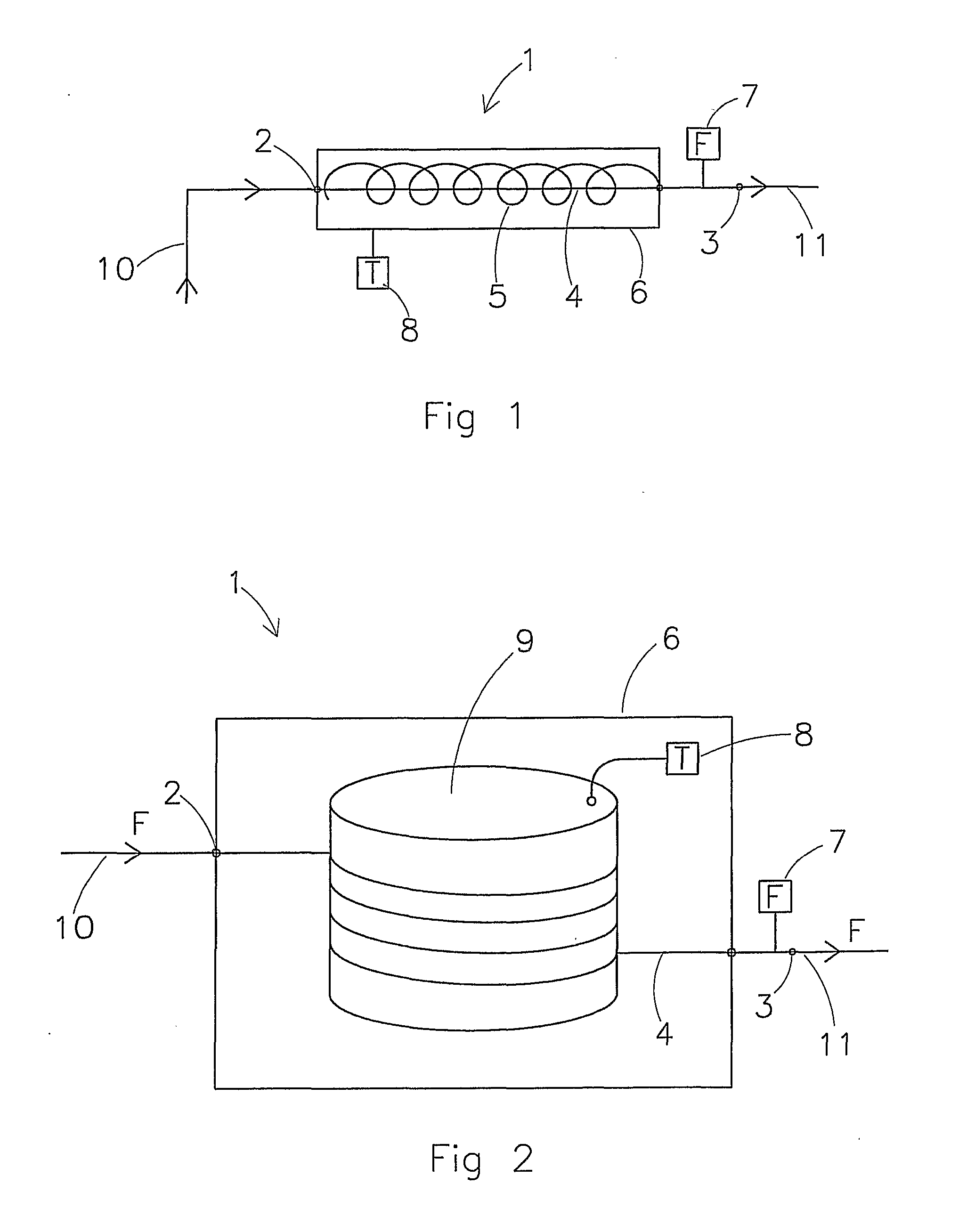Reaction assembly and flow splitter
- Summary
- Abstract
- Description
- Claims
- Application Information
AI Technical Summary
Benefits of technology
Problems solved by technology
Method used
Image
Examples
first embodiment
[0080]FIG. 3 shows a reaction system according to the invention. This reaction system comprises a fluid supply unit 31 for supplying a primary fluid flow P. The reaction system further comprises in this example two manifolds 20, that each have four capillary units 1 connected to them. The skilled person will understand that any other number of manifolds and / or capillary units is also possible. Connection lines 12 connect the fluid supply unit 31 to the manifolds 20. The primary fluid flow P is first divided into flows SA and SB. The first flow splitter divides flow SA into secondary fluid flows SA1, SA2, SA3 and SA4. The second flow splitter divides flow SB into secondary fluid flows SB1, SB2, SB3 and SB4.
[0081]In the embodiment of FIG. 3, the housings 6 of the capillary units 1 connected to the same manifold 20 are arranged together in a cassette 33. This allows easy mounting into a reaction system setup, for example in a rack. It also allows a fast exchange of sets of capillary un...
second embodiment
[0091]FIG. 4 shows a reaction system according to the invention. In this embodiment, the reaction system comprises a first fluid supply unit 41 and a second fluid supply unit 42. The first fluid supply unit 41 delivers a first primary fluid flow F1 at a first pressure p1. The second fluid supply unit 42 delivers a second primary fluid flow F2 at a second pressure p2. It is possible that p1 is equal to p2, but the system is in particular suitable for situations in which p1 and p2 are different. It is also suitable for a system in which parallel reactions are carried out using different fluids.
[0092]Downstream of first fluid supply unit 41, first capillary unit 40* is arranged. First capillary unit 40* is a capillary unit according to the invention, for example a first capillary unit according to FIG. 1. The first fluid supply unit 41 is connected to first capillary unit 40* by supply line 10*. Downstream of the first capillary unit 40*, discharge line 11* is arranged for supplying fi...
third embodiment
[0097]FIG. 5 shows a reaction system according to the invention. In this embodiment, capillary units according to the invention are used as part of a back pressure control system.
[0098]In the reaction system according to FIG. 5, a plurality of reaction vessels 32 is provided. Each reaction vessel 32 is provided with at least one reaction vessel inlet 34 and at least one reaction vessel outlet 35. A primary fluid flow P is supplied to the system, which is then in this example split up into secondary fluid flows S1, S2 and S3. For this flow splitting, a flow splitter according to the invention, for example a flow splitter according to FIG. 7, can be used, but this is not necessary. In the reaction system of FIG. 5, each of the reaction vessels 32 is provided with a reaction vessel effluent line 50 for discharging the reaction effluent from that particular reaction vessel 32. The reaction vessel effluent line 50 is connected to the reaction vessel outlet 35 of the associated reaction v...
PUM
 Login to View More
Login to View More Abstract
Description
Claims
Application Information
 Login to View More
Login to View More - R&D Engineer
- R&D Manager
- IP Professional
- Industry Leading Data Capabilities
- Powerful AI technology
- Patent DNA Extraction
Browse by: Latest US Patents, China's latest patents, Technical Efficacy Thesaurus, Application Domain, Technology Topic, Popular Technical Reports.
© 2024 PatSnap. All rights reserved.Legal|Privacy policy|Modern Slavery Act Transparency Statement|Sitemap|About US| Contact US: help@patsnap.com










